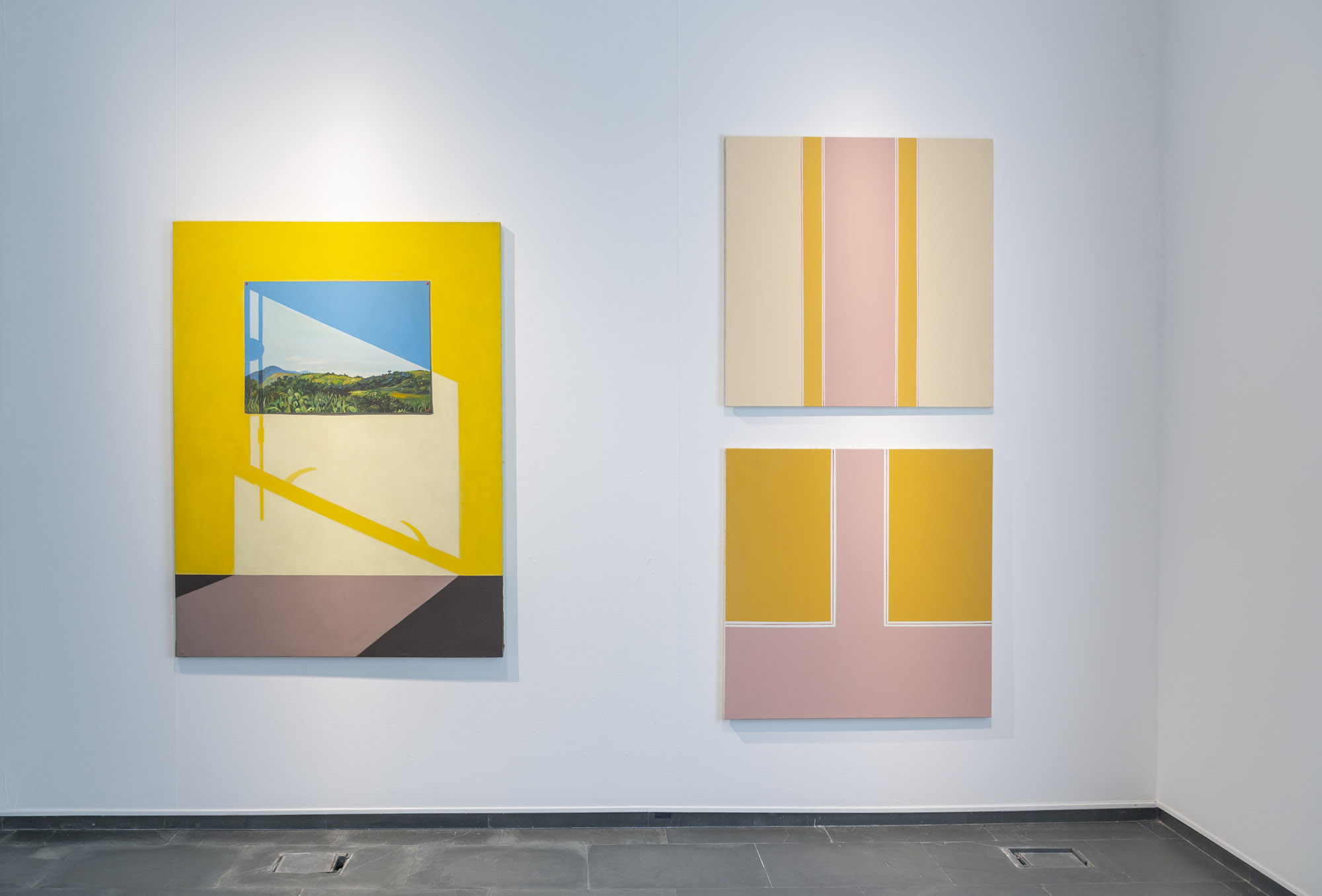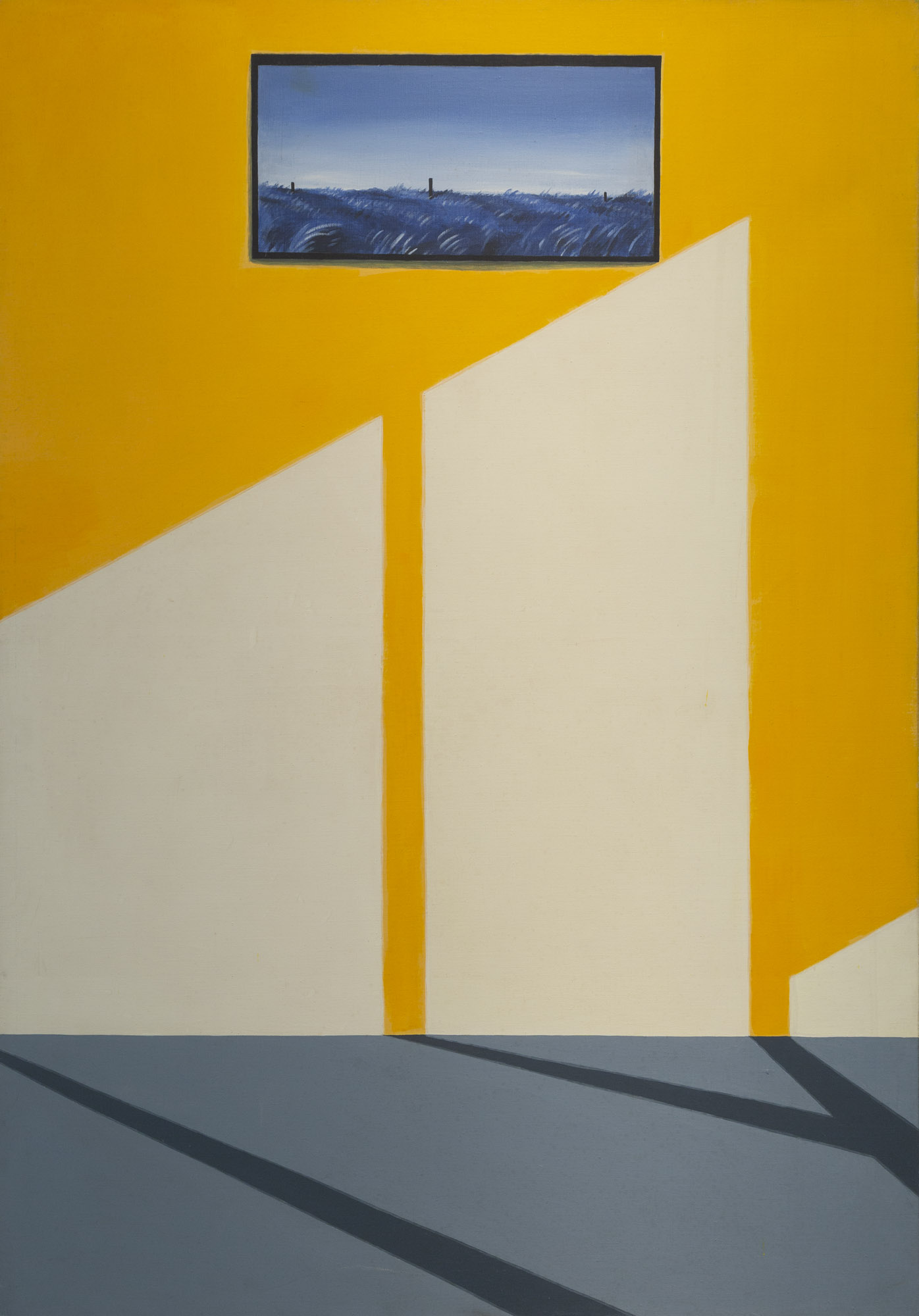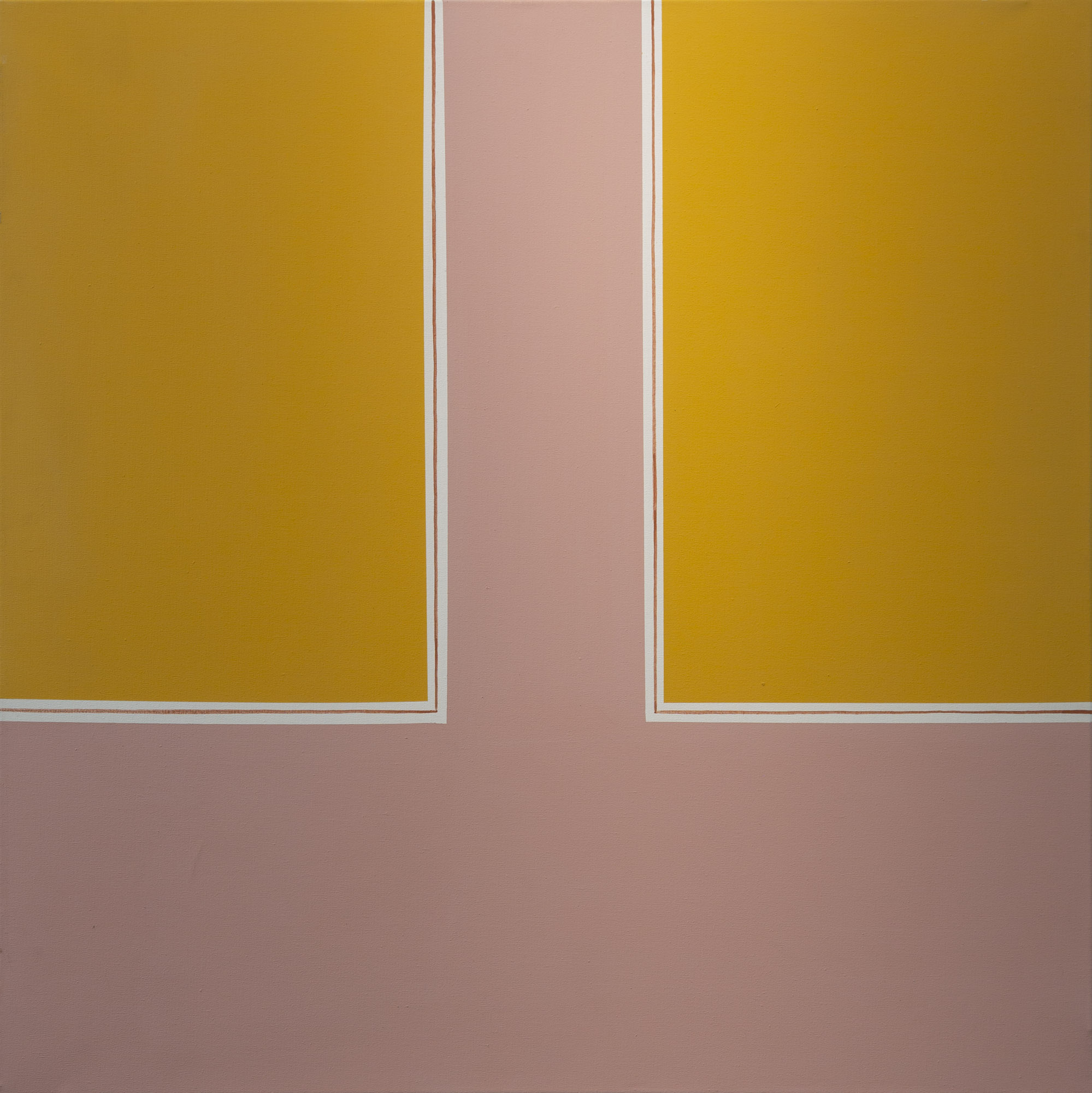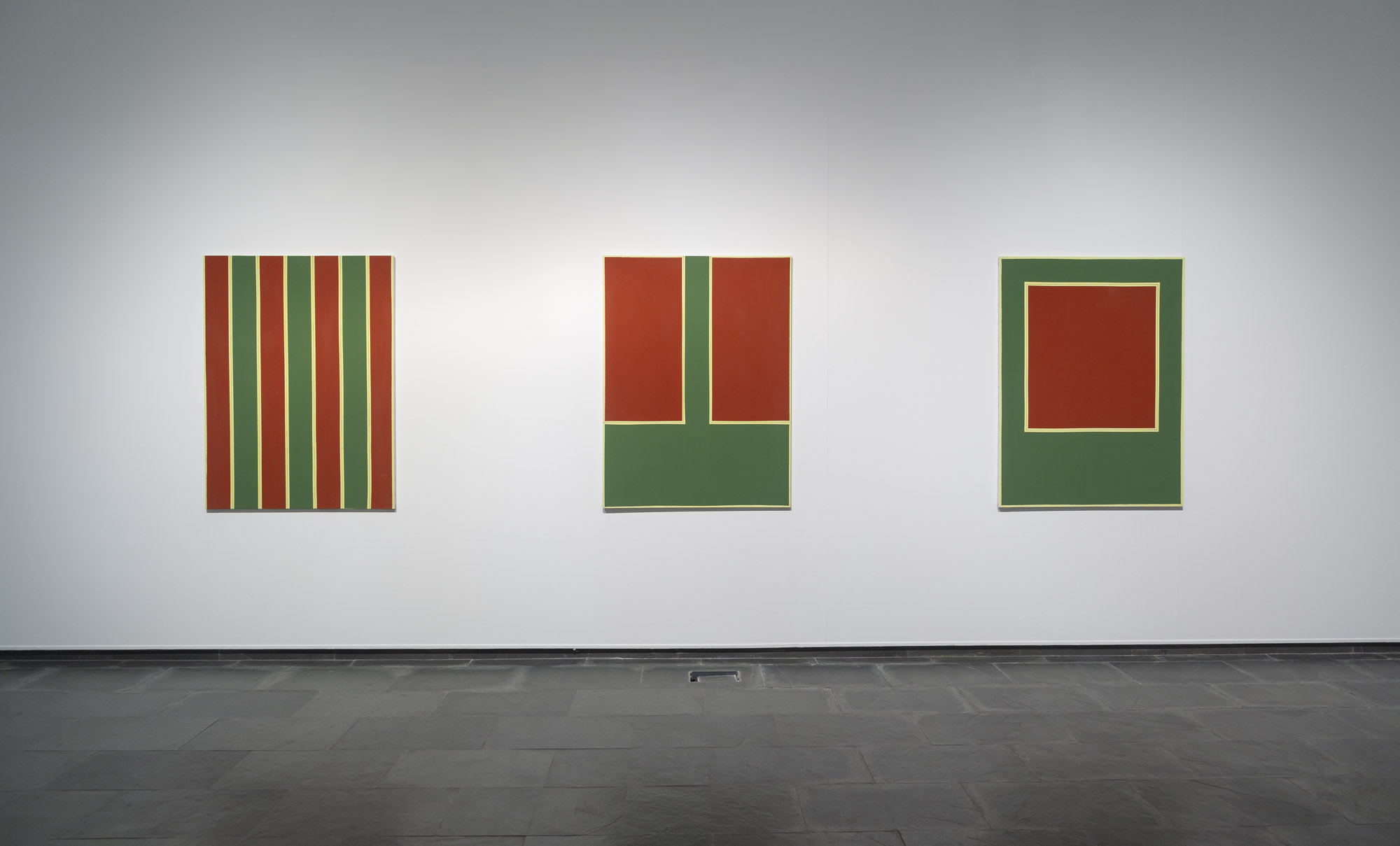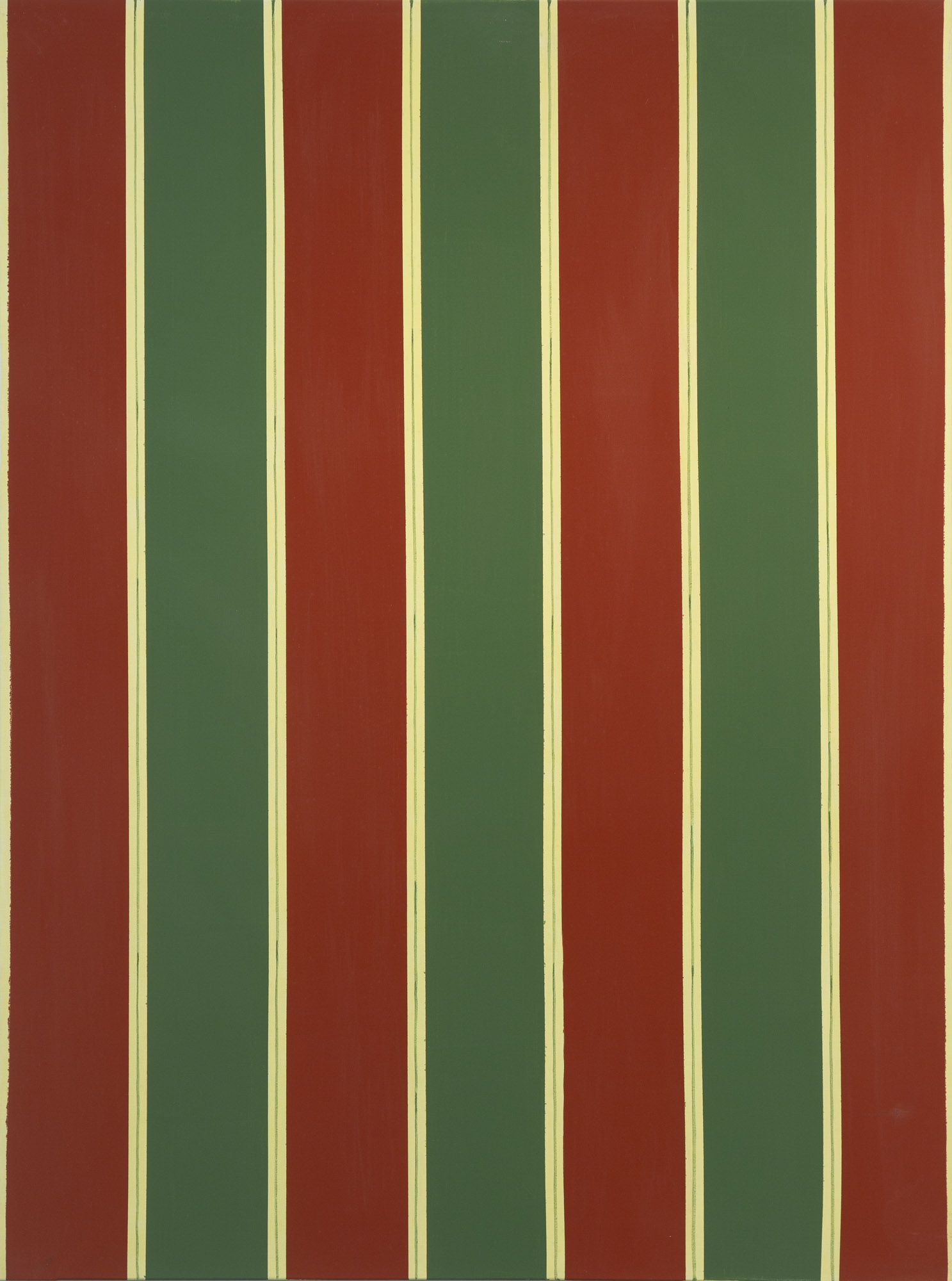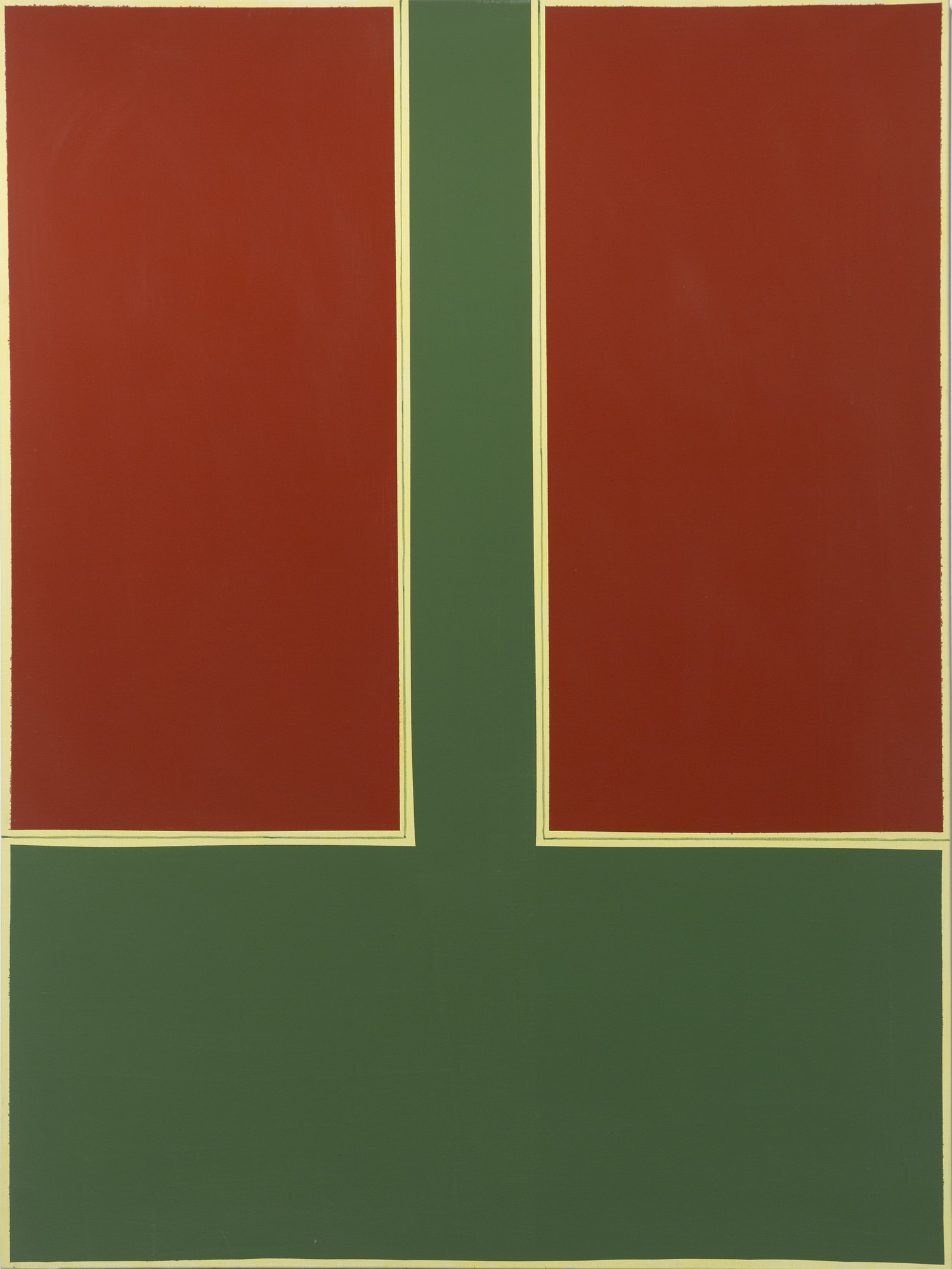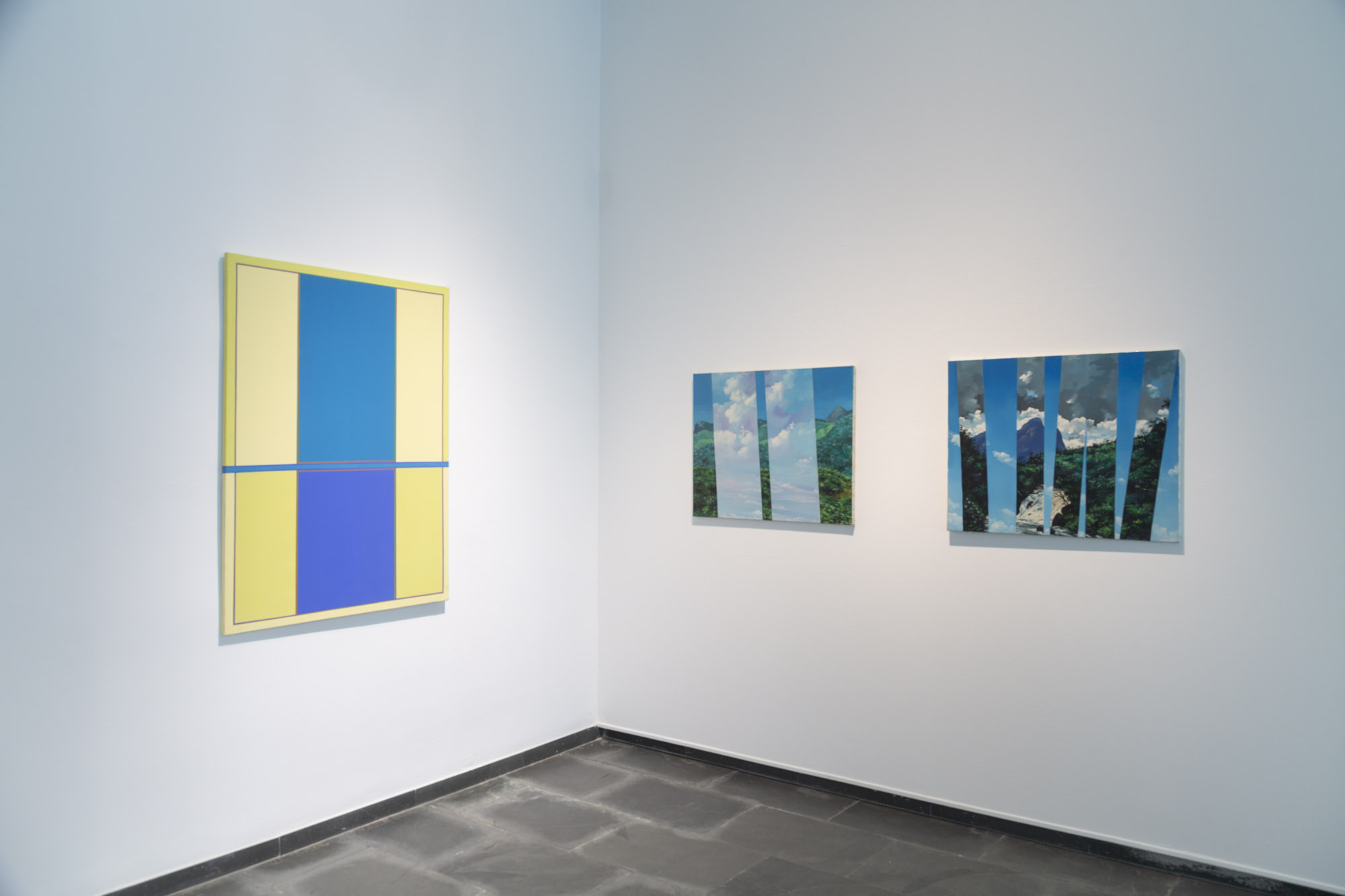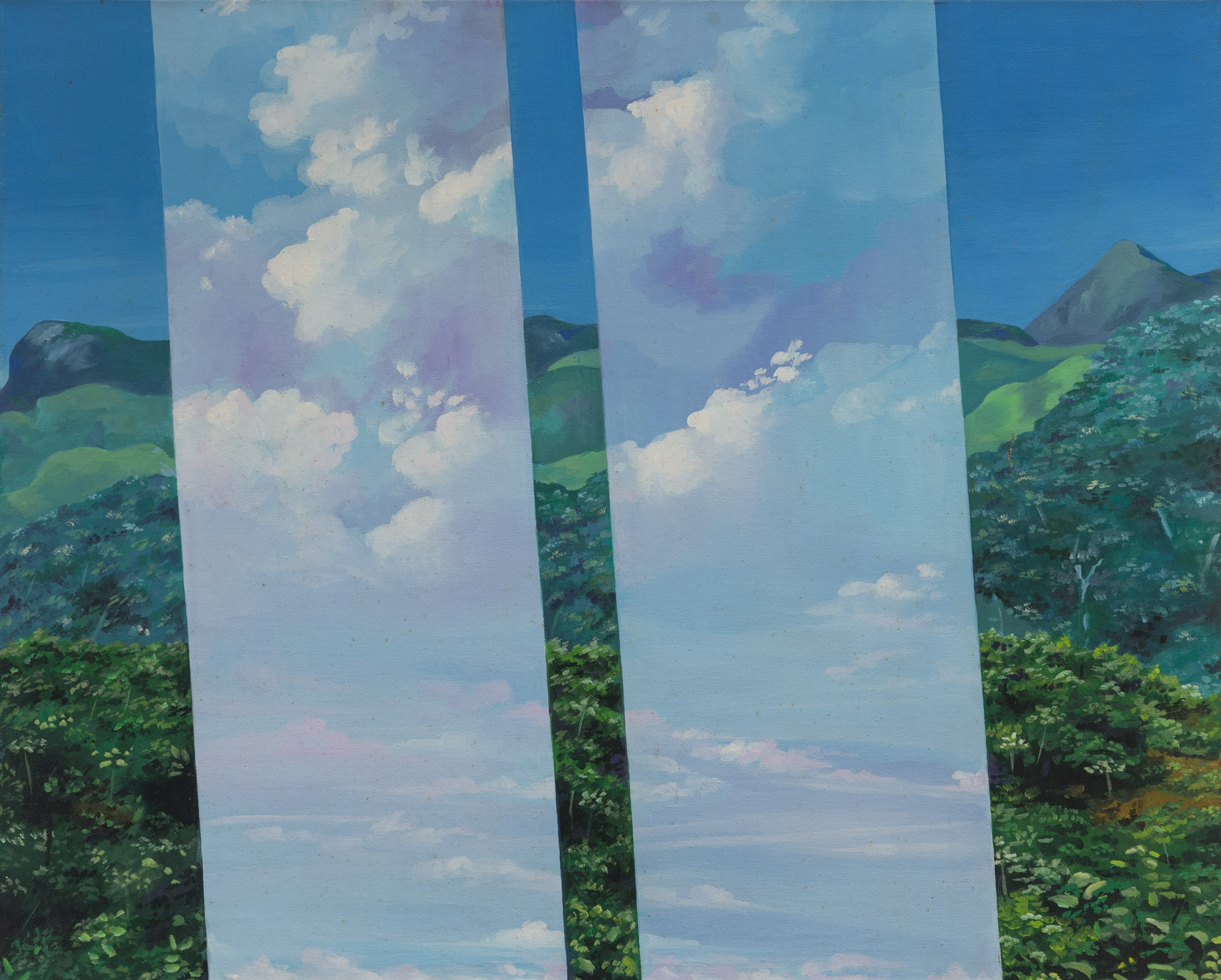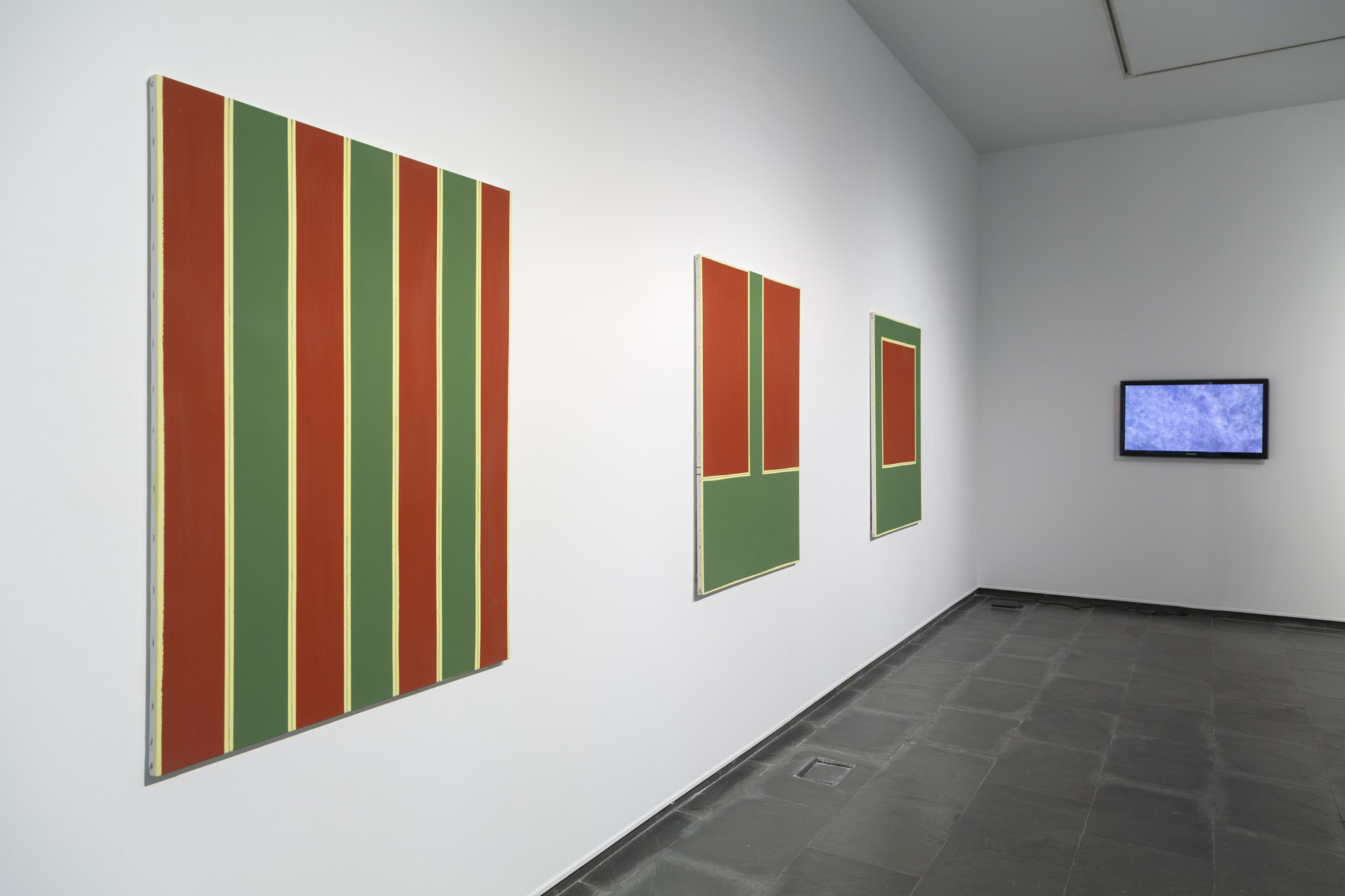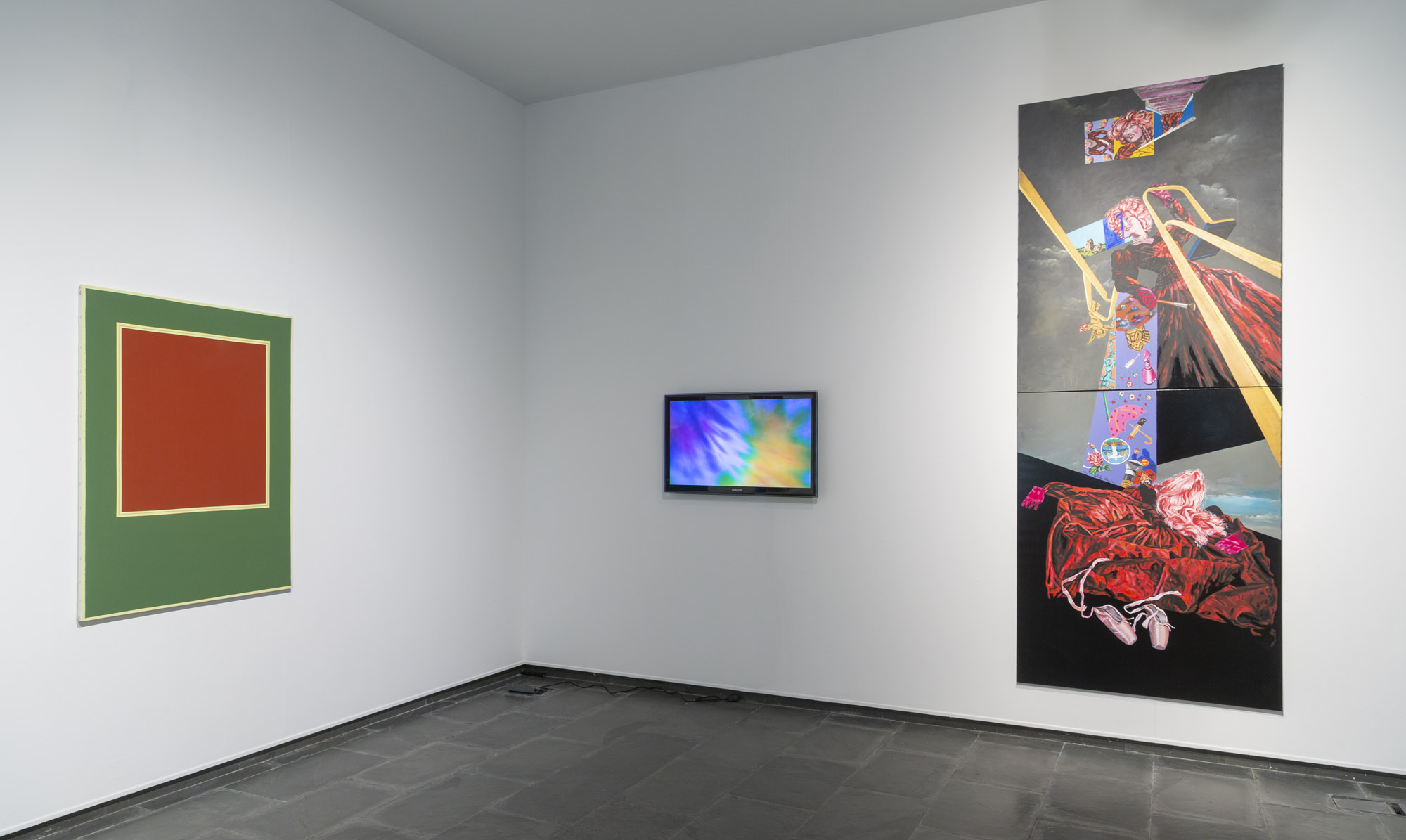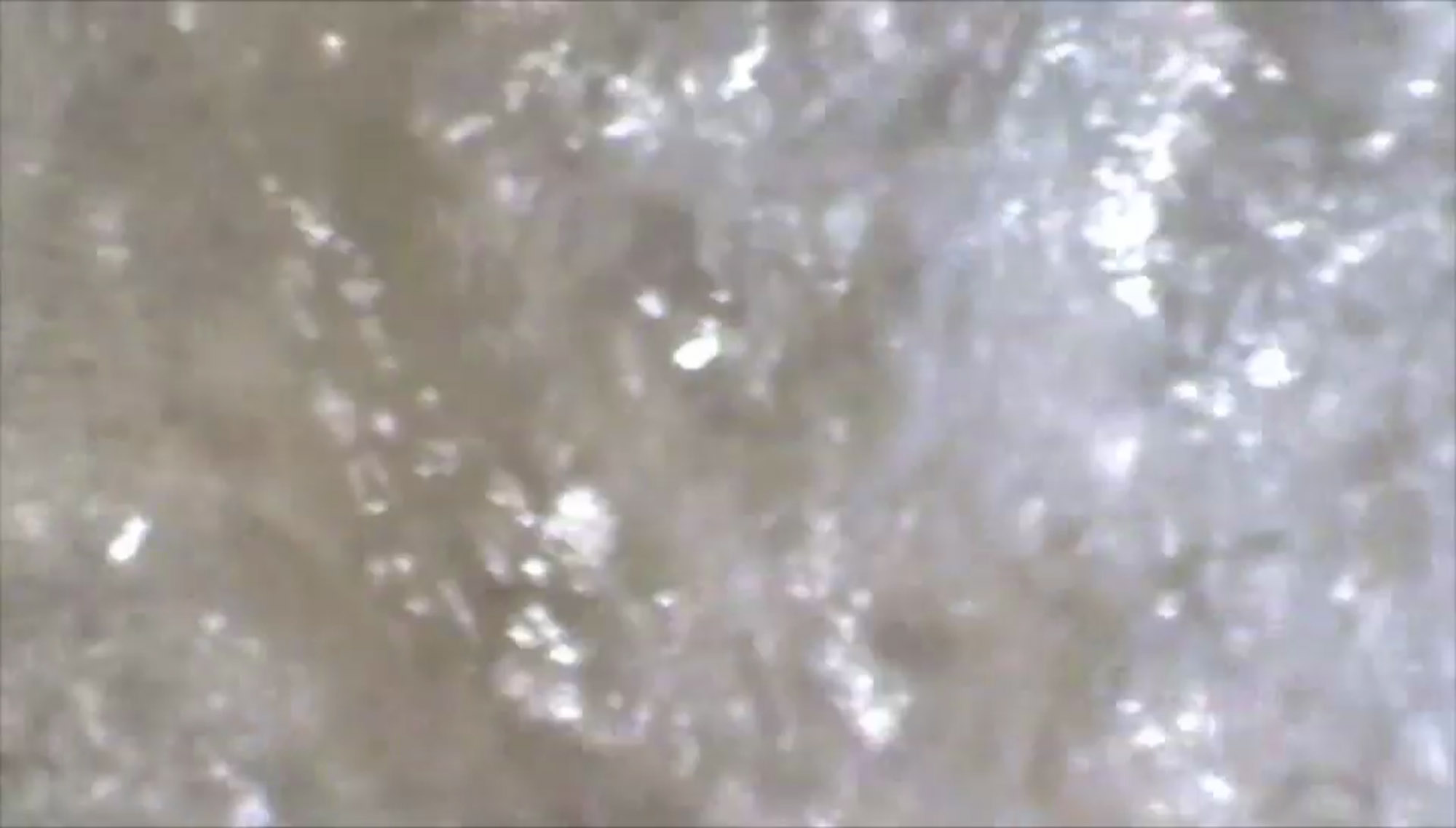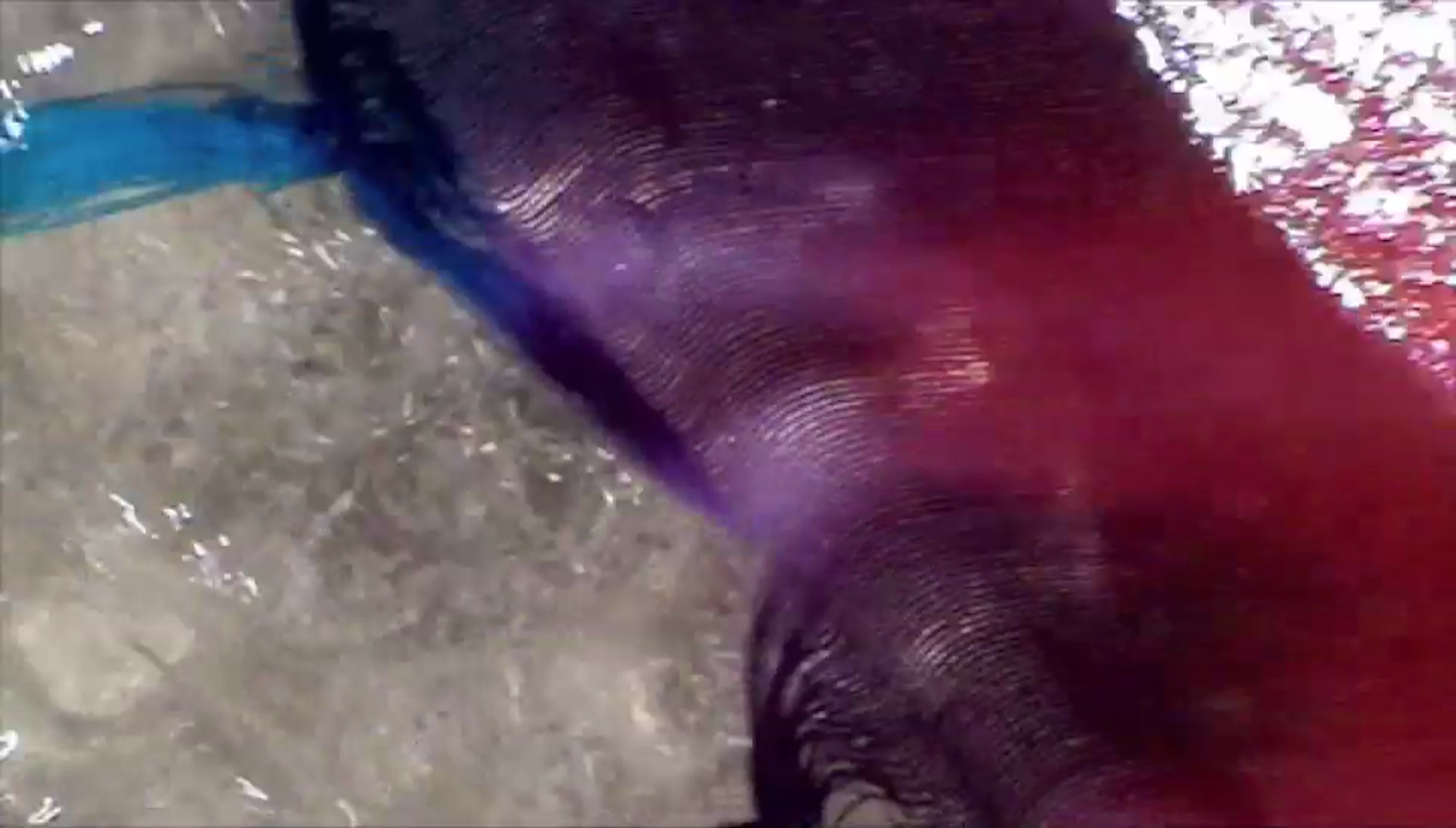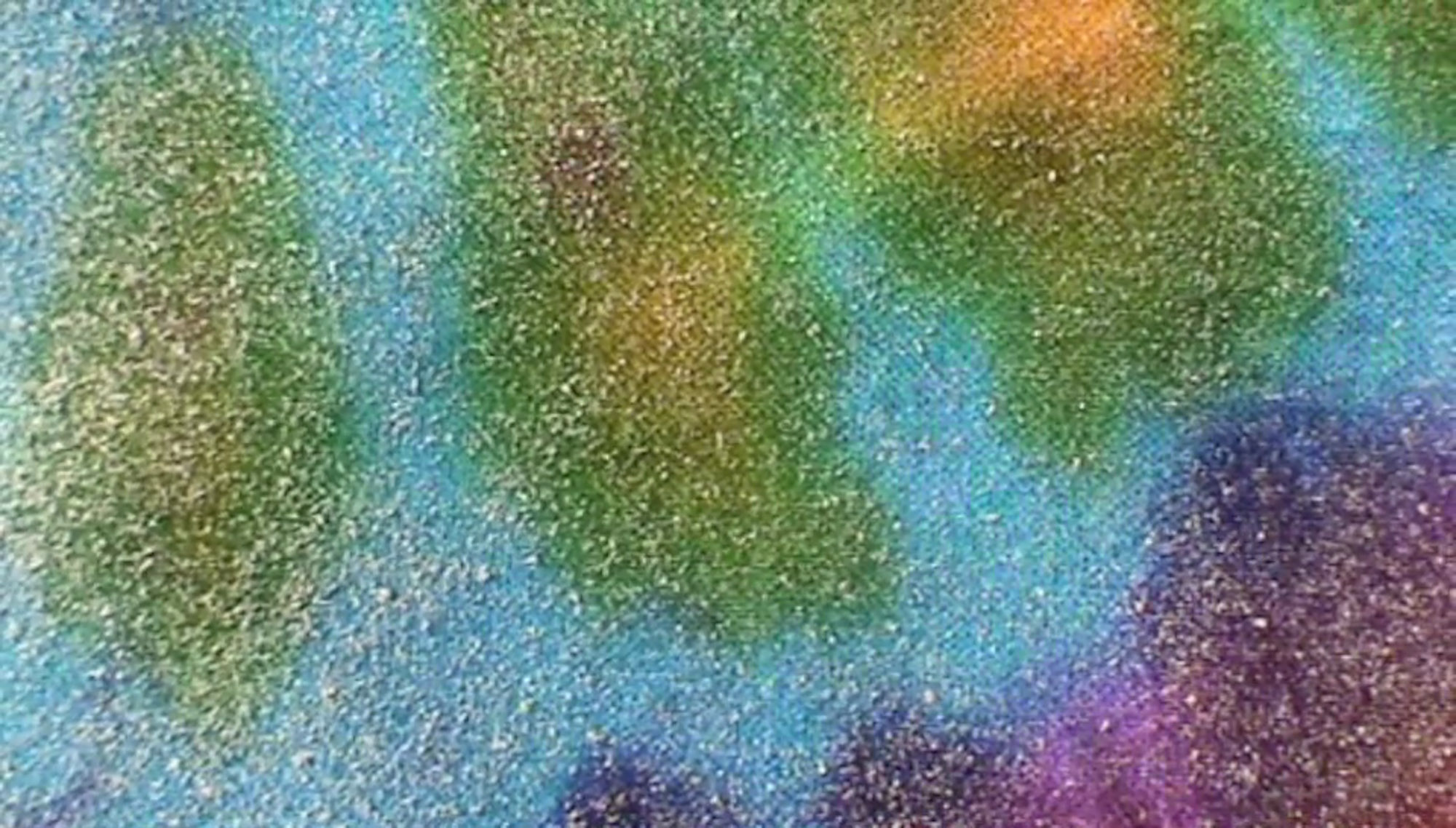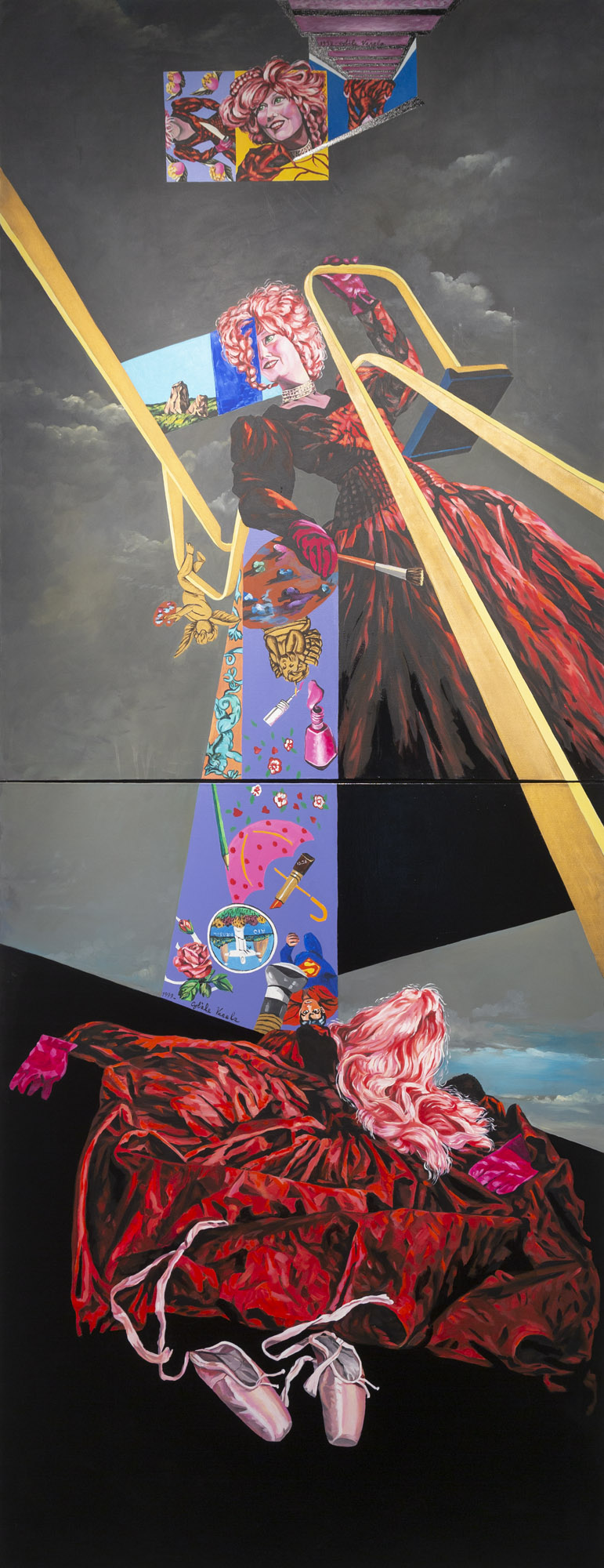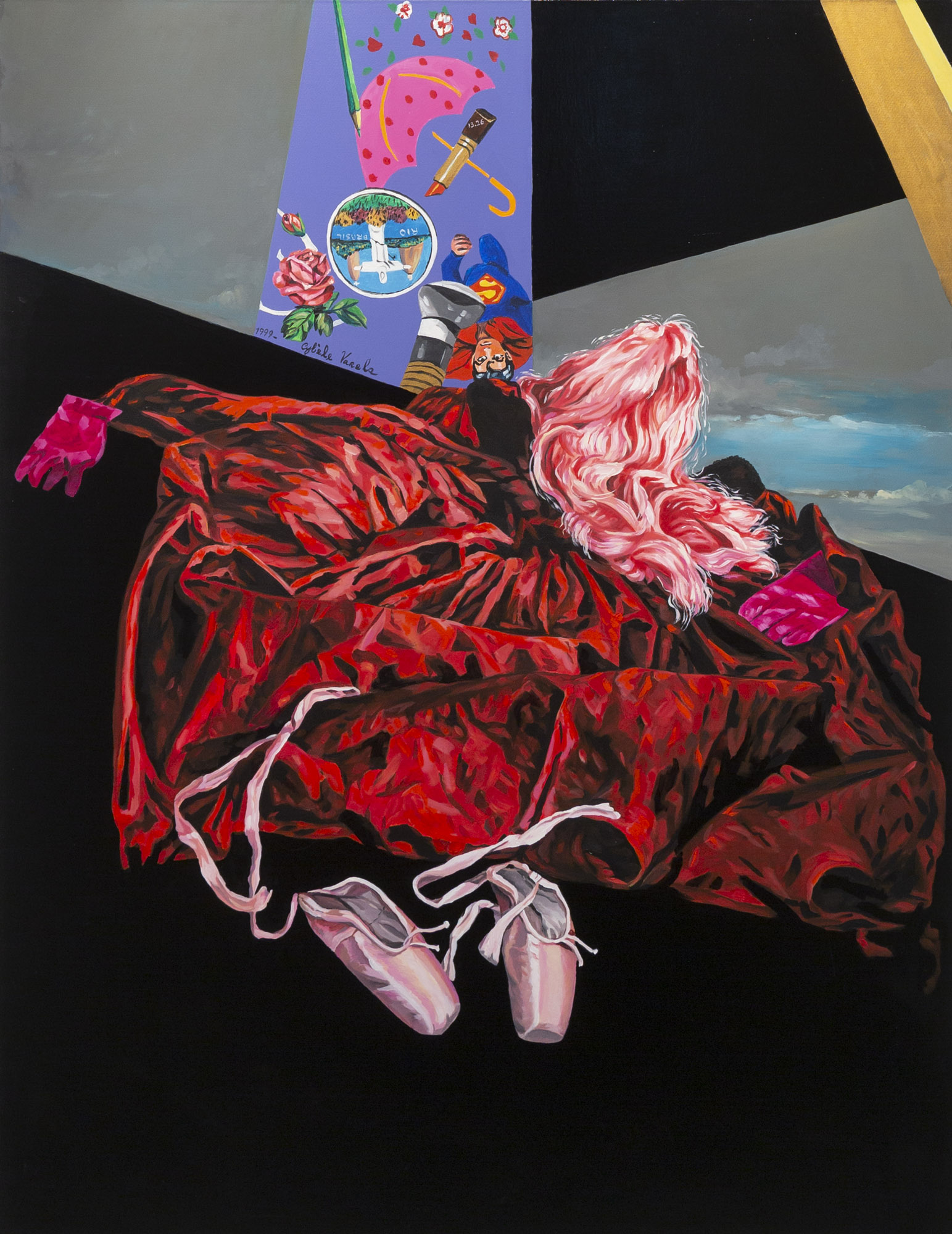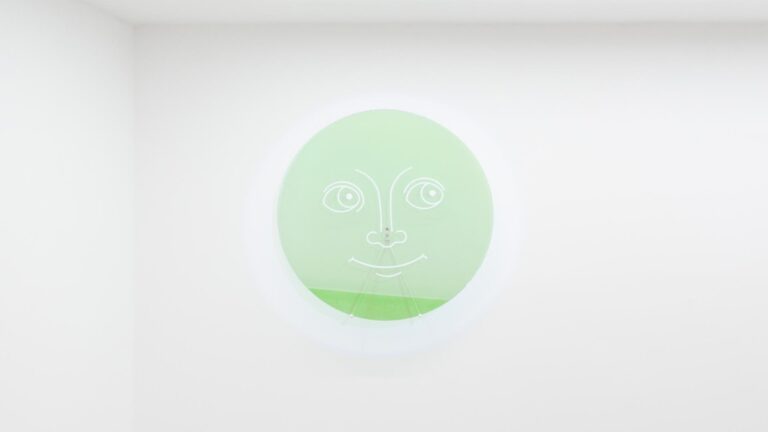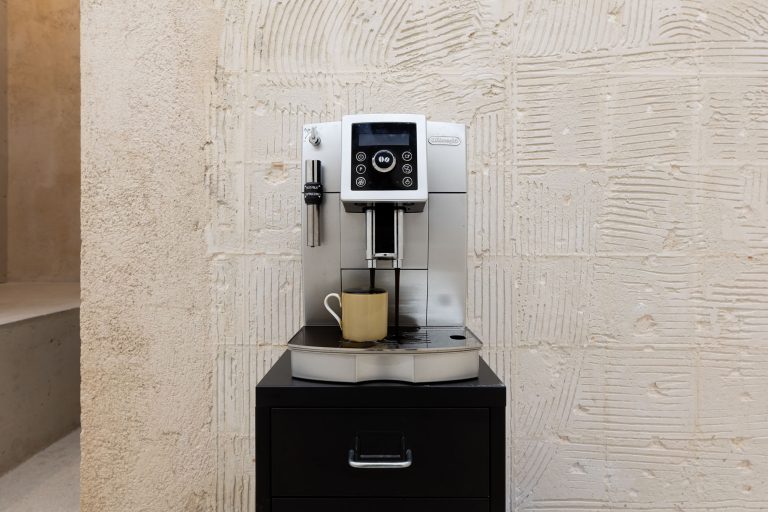Artists: Cybèle Varela and Pepa Caballero
Exhibition title: Modes Of Light (Los Modos De La Luz)
Curated by: Isabel Garnelo and Carmen Cortés
Venue: Galería Isabel Hurley, Malaga, Spain
Date: November 11 – December 16, 2021
Photography: all images copyright and courtesy of the artists and Galería Isabel Hurley, Malaga
It might seem strange to bring together in the same exhibition pictorial positions that have historically been at odds with each other, such as Pop and Abstraction. With the intention of making this circumstance a challenge, the Isabel Hurley Gallery brings together two artists, Cybèle Varela (Petrópolis-Rio de Janeiro-Brazil 1943), a renowned Brazilian Pop artist, and Pepa Caballero (Granada 1943 – Málaga 2012), a Spanish artist who worked in the expanded field of abstraction until her death. Varela has been linked to Latin American Pop and Tropicalism. The desire of these movements to distance themselves from Brazilian Neo-Concretism was a gesture of rupture, similar to that which arose in American Pop Art in relation to the abstraction of the New York School, movements which were dominant between 1959 and 1961
As is logical, the historical conditions establish a distance between the artists, although they are sadly united by the decisive fact of having lived under a dictatorship which, in both Brazil and in Spain, marked the political climate of those years. This point seems to us to be critical in the encounter between Varela and Caballero, as we are interested in elucidating what each one’s practice has represented in the artistic context in which they developed it.
Varela has had an international career since very young. She trained in Rio de Janeiro and Paris, where she received scholarships and took part in important group exhibitions. She connected with international movements such as British and American Pop Art and French New Realism. Despite this, she has not been studied or included, as it would deserve, in the historiography of these processes, in which she worked at the time of their emergence, playing a crucial role, in cities that saw an enormous pictorial and theoretical development in the years between 1959 and 1964.
For her part, the Spanish artist Pepa Caballero followed different paths in her artistic search, but we could highlight her perseverance as making her a good representative of the Geometric Abstraction movement in Málaga and, therefore, in Spain. Despite this, she has not been considered in the context of the national abstract movements, either.
Since the beginning of their careers, both painters have shared an unstoppable and therefore productive exhibition activity, although each one’s approach to the creative process is undoubtedly very different.
Among the exhibitions of the last years, Varela have participated in Un Tiempo Propio, at Centre Pompidou, Málaga, 2021-2022; Tropicalismo Remixed, at Brasilea Foundation, Basel, in 2018; AI-5 50 anos, at Tomie Ohtake Institute, São Paulo, in 2018; The World Goes Pop, at Tate Modern in 2015, when the artist is recognised as one of the keys of Brazilian Pop; Espaços Simultâneos , at MAC Niteroi, Rio de Janeiro; or Elles, at Centre Pompidou Paris, in 2009.
For Varela, what is important is the idea and the images to which the plastic elaboration of the idea can give rise. This is not the only link we can find in her work with the precepts of conceptual art. For several years she created around the same theme, letting the images impose their own narratives. The solutions thus obtained demonstrated the conceptual importance of the applied technology. The use of photography and video, for example, has been a necessary experience to encourage new speculations; among others, it has allowed her to introduce the painting into the photograph, as she does in her paintings with a painting within the painting, or to deepen her interest in the imprecision of images.
As Varela says about her work: The issue of cutting or clipping as a working method has always interested me, be it visual, verbal, in painting, photo or video. Selecting, cutting, clipping are artistic, narrative, and historical processes that determine our daily walk, constantly weaving and building new memories, forging new personal, collective, or social narratives. In my recent works, I construct new dynamic spaces, in which the narrative appears as a fluid environment, where seemingly disconnected figures follow particular roads, intersected by flows of luminous colours. These images are invitations to reflect on creative processes and new spatialities, on the mechanisms that structure and define the construction of alternative spaces and mixed temporalities. A pretext to reflect on the ambiguities that run through our daily lives.
Cybèle Varela’s works that take part inLos modos de la luz were produced at different times. We present several paintings whose landscapes evoke Brazilian nature, revealing how the nature, colours, and light of her country are constantly present in her mind. These elements give way to a reflection on the very essence of pictorial representation, developed in all her works entitled “Image”, such is the case of those present at the exhibition, belonging to a large series which began in the mid-1970s and continued in the 1980s. Works commented by the critics Pierre Restany, Jean-Jacques Leveque, or Jean-Luc Chalumeuau, among others. It was also the period when she started working with photo and video. Each medium allowed her to experiment over the same idea in different ways. The video “Transfer”, created between 2010 and 2013, shown close to them, is a good example.
Finally, in the diptych “The Artist 1”, belonging to the end of the 1990´s, takes up some of the elements of the Narrative Figurative movement, mixed with soft touches of its Pop period. It is a self-portrait vindicating her feminine condition as creator, in which underlies the theme of the relationship of the human being with nature. The composition of an evident narrative, crossed by strong lines, refers to the question of the perception of parallel realities and memory, which have always accompanied Cybèle Varela in her artistic career, along with gender and social issues.
Pepa Caballero follows a creative process of non-linear progression towards Geometric Abstraction. In her case, her interest in surfaces is clear. The delimitation of the representational precepts to influence light and colour, from both constructive and analytical perspectives, is the main axis of her work. These two elements are keys that both share, because they are subjects of reflection of the research on the idea, oriented in the case of Caballero by interests linked to both contemporary art and the past of the practice of painting and art history, especially the great masters of Western art. The plastic sign and the result of the surface are an inseparable part of the content of Pepa Caballero’s work in which everything is related to expressing an idea and everything is subordinated to the program of the theme. As Tecla Lumbreras has highlighted, the importance that Pepa Caballero gives to light as a theme is visible in her works, as well as her fascination with the classical systems of ratio and proportion. The basic units are canvases that, once designed and painted, are grouped in different ways. Some of her compositions are diptychs, but most are triptychs showing variations in composition and colour.
In relation to the pictorial realisation in Caballero’s works, we observe the homogeneity of the pigment applied with precision on the canvas, the impeccable divisions of the fields of colour, the exact tracing of the lines that cross the various areas into which the painting is divided, the brushstroke and the use of the grid. Everything is articulated to give shape to an idea for the pleasure that a good job brings.
In this exhibition we may contemplate works by Pepa Caballero from late 1999 to 2002. One of them, from the series Trilogy, is entitled “Planos cortados por el oro de Fra Angelico” (2002). Fra Angelico’s work, particularly the Annunciation at the Prado Museum, had a great impact on Caballero; blue and, above all, gold, the colour of light for her, will be fundamental in her pictorial evolution. The other pieces, made in 1999 and 2000, belong to the series Mediterráneo , inspired by the light and colour of the landscapes of both shores of this sea, and the different cultures that have flourished in them. Thus, roses and yellows appeal to heat, summer winds, and sunsets. While the others, in red and green, recover architectural elements to which it incorporates vibrant hues, where the trick is invited to the celebration of abstraction. Thus, the Roman frescoes of Pompeii are stripped of their figures, preserving only the background.
-Isabel Garnelo and Carmen Cortés



